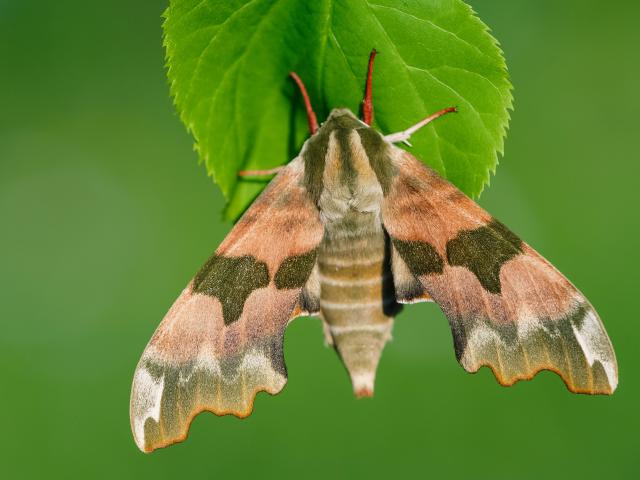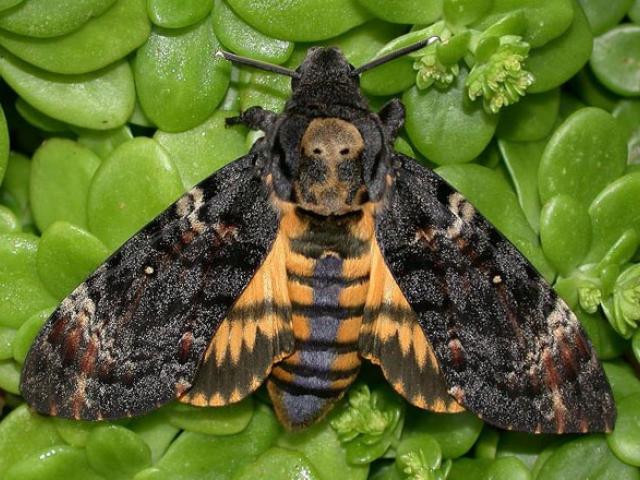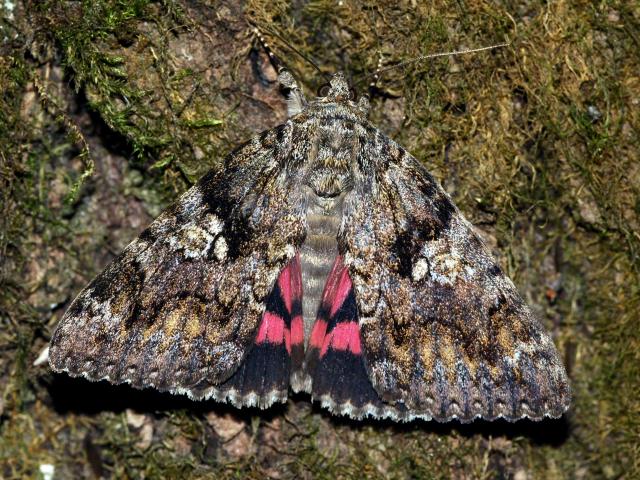Moths often have weird and wonderful English names but every moth species has a scientific name in Latin (often mixed with Greek). Most micro-moths only have a scientific name, but all macro-moths have an English name as well. The history and meaning of the names can be as fascinating as the moths themselves.
There are groups of moths called carpets, kittens, pugs, tigers, hawks, footmen, quakers, daggers and darts. These names relate to some common characteristic of each group, such as the intricate patterning of the carpets or the plain appearance of the quakers.

Some species' names give factual information about where the moth is found or what the caterpillar eats, as in the Garden Carpet and Lime Hawk-moth. Others give a more imaginative description of the moth's appearance.
For example, the White Ermine is rather furry and white with black spots, like the fur trimming on royal robes. The Mother Shipton has wing markings that look like the profile of that legendary witch.

The scientific name also often refers to some characteristic of the moth, such as its appearance or food-plant or where it lives. The Death's-head Hawk-moth has an eerie skull-like marking on its back which is also reflected in its scientific name, Acheronita atropos.
In Greek myths Acheron was the river of pain in the underworld and Atropos cut the thread of life.

The Dark Crimson Underwing has a more light-hearted scientific name referring to its bright red hind wings, which are usually hidden when at rest.
Catocala sponsa comes from the words for below, beautiful and bride, and apparently refers to an old tradition of brides wearing gaudy underwear!

